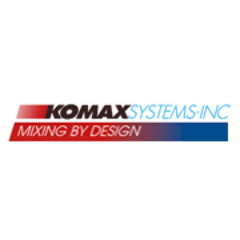Meeting Today’s Water Treatment Needs With Better Mixing Technology

HUNTINGTON BEACH, Calif., March 1, 2017 — The water treatment needs of today’s society are rapidly changing, and Komax is working to meet that change with a unique Channel Mixer design created for today’s municipalities and organizations.
A Shifting Infrastructure
Water treatment plants have an extensive history throughout the United States and Europe. The problem? That history has often impeded progress, and these days, the headlines of any media outlet are filled with the upgrades these plants are making to keep the water safe for everyone. Millions of facilities are being renovated or built from scratch to help keep up with today’s world. Often those facilities must be as close to energy neutral as possible.
“At Komax, we understand the need to design products that actually work better without using as much energy, and our Channel Mixer is no exception. It offers 100% energy savings to any municipality or organization,” said Sameer Kshirsagar/Sr. Applications Specialist.
Komax has long been considered the industry expert in static mixing technology, and these mixers work using a similar philosophy. They are, however, designed to be installed in any cross section, including open and closed ducts with a low-pressure drop design.
Amazing Results
The City of Denver Colorado installed a Channel Mixer from Komax as their chlorine contacting mixer. A fairly large model, it was 10′ x 10′ x35. Assembled and installed in less than eight man hours, later testing discovered a mixing efficiency of .02 COV. It was also quickly discovered that the installation meant a 50% reduction in chlorine consumption over the previous system.
The Komax Channel Mixer is ideal for both new installations and those looking to retrofit older facilities. Completely customizable, it’s one component that is certain to continue to help change the water treatment industry.


